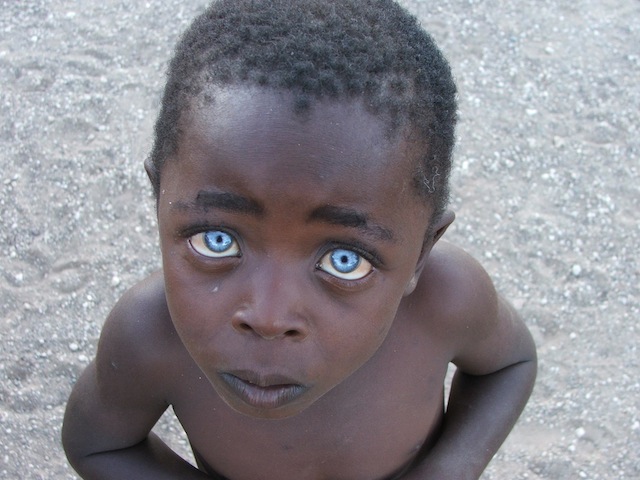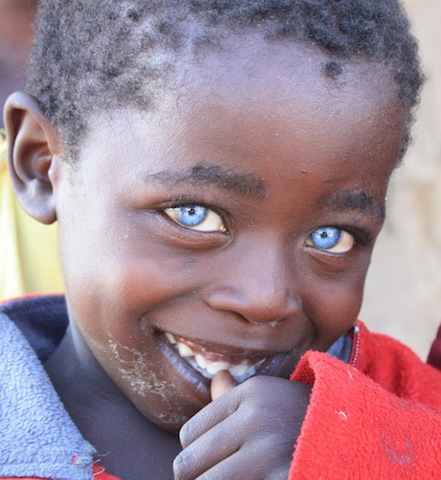
The above image was recently submitted by Vanessa Bristow, who called it ‘The Boy with Sapphire Eyes’.
Within minutes of posting this magical picture, there was an enormous flood of comments and feedback. Amongst much of the rumpus was a fair degree of suspicion, doubting and downright slander about the picture’s authenticity. Swoops of ‘blatant photoshopping’ were amongst the commotion. Most people came to their immediate conclusion that this photo was fake!

Let us set the record straight. The photo of the boy with sapphire eyes is not altered at all. Here is a comment from the photographer herself:
“To all of you DOUBTING THOMAS’ out there who distrust the originality of this photograph: It is NOT Photoshopped. I was in the local communal lands looking for my lost Dalmatian dog, and I stopped to ask his mother if she had seen it. While I was talking to her, her son, who was playing with his siblings and friends nearby, caught my eye. I asked her if I could photograph him, and this is the first picture that I took of him – it was possibly his first interaction up close with a white person, and his fascination in me, or the camera, is evident. I took a few photos of him at the time and a few more later during a follow-up. An ophthalmologist friend had this to say about his unusual eyes:
[quote]”The picture of the little boy with the blue eyes and dark skin probably represents Ocular Albinism or Nettleship-Falls albinism, or Juvenile uveitis. Both conditions cause the pigment of the iris to be less dense.”[/quote]
Thanks for all the support from those of you who like my picture.
The below picture of Theuns was taken a week or two after the first. This time, he was much more relaxed with me, and I let him “click” the camera a few times to get him to engage with me.”

Continues Ms Bristow: “I must say, when I first saw the photo, I initially thought that blue eyes sometimes occurred in black people because of a recessive gene. If you are interested in reading a fascinating book – I recommend ‘The Sunburnt Queen’, by Hazel Crampton. Based in the 1730s, the book is about a seven-year-old English girl who was washed up on the Wild Coast of South Africa and adopted by her rescuers. She grew to be a woman of astounding beauty and wisdom and became the wife of a prince; thus starting a dynasty that extends to many of today’s Xhosa royal families.
Because of her recessive gene in the bloodline, now and then, a black child in the area is born with bright blue eyes.”
To comment on this story: Login (or sign up) to our app here - it's a troll-free safe place 🙂.![]()








